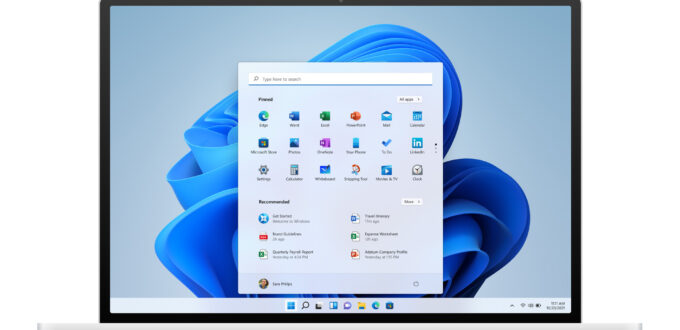What’s the use of Windows 11? With Windows 10, Microsoft must make a large course correction from Windows 8, an ambitious but defective effort in bringing a PC to the touch screen era. Before that, Windows 7 was intended as a ceiling cleaner to help us forget the bloated chaos, Vista. Given that Windows 10 is quite polished when it is launched, and only becomes better than time to time, why needs for a completely new version?
After testing the early buildings for months, as well as the release of the delivery of the last week (this is the way to catch himself), it is clear that Microsoft is actually not trying to repair a lot with Windows 11. It basically coats the paint on it Windows 10 (and possible last efforts In rebranding Windows 10x that is dead.) But the more I use it, the easier it is to see that small design tweaks can run far. Windows 10 focuses on lasers on productivity; It aims to make you as efficient as possible. Windows 11 goes further: What if it becomes productive is also fun and strangely relaxed? Windows, meets attention.
What’s new
At first glance, Windows 11 may look like a radical departure from a typical Microsoft desktop template – aesthetics that Harkens returns to Windows 95. The taskbar is still there, but now all your icons are centered by default. The menu starts back with a redesigned display displaying an embedded and recommended application (you can also press all applications to see everything you installed). Rip, live tiles – no one has ever used you.
This divaetic display extends along Windows 11: Windows Windows now has a rounded angle; Icons, Windows Explorer and setting applications look sharper than before; And even sound effects have been cleaned. This is the most enhanced window. However, to make it insatiable, it also looks very similar to MacOS. But no fret, Windows Diehards: You can still push the entire taskbar back to the left side of the screen. (Note Editor: Where it is.)
Microsoft also reworked system trays, for better and worse. Hit the date and time gave rise to your notification and calendar, while clicking on the volume or network icon makes the new action center appear. This is similar to a system shortcut in Windows 10, allowing you to change the Wi-Fi network, activate the plane mode and quickly change your brightness and volume. You can also easily reach several accessibility tweaks, such as activating magnifiers or color filters. Everything looks slimmer than Windows 10, although some options are fully lost, such as the ability to turn on and turn off the Night Lite settings.
Windows 11 also marks the main return for widgets: biting sized applications that also appear in Windows 7. You can reach them by pressing the widget button in the taskbar, but frankly, I find them useless. These days, I don’t need screens that can be polished for my calendar, news, and letters, not when my smartphone is always within reach.
Less visible rather than changing taskbar, but still important, is a new Windows Store. It looks cleaner, with the left navigation bar and several panels for individual application entries. I will bet Microsoft just wants to keep the installation button and buy it in a clear display at any time. Windows 10 also get the same store application in the end, so it’s not really exclusive to the new OS. Finally, we will also see an Android application on Microsoft Store, but it is not clear when it happens.
Similarly, Windows 11 is sent with the latest Xbox application, but it is also available in Windows 10. You still want to update the best overall gaming performance, because Windows 11 will be the only way to use Microsoft Directstorage technology on pcs. Every time it landed must dramatically speed up loading time (assuming you have a compatible GPU and SSD) like the Xbox Series S and X.


No Comments Yet